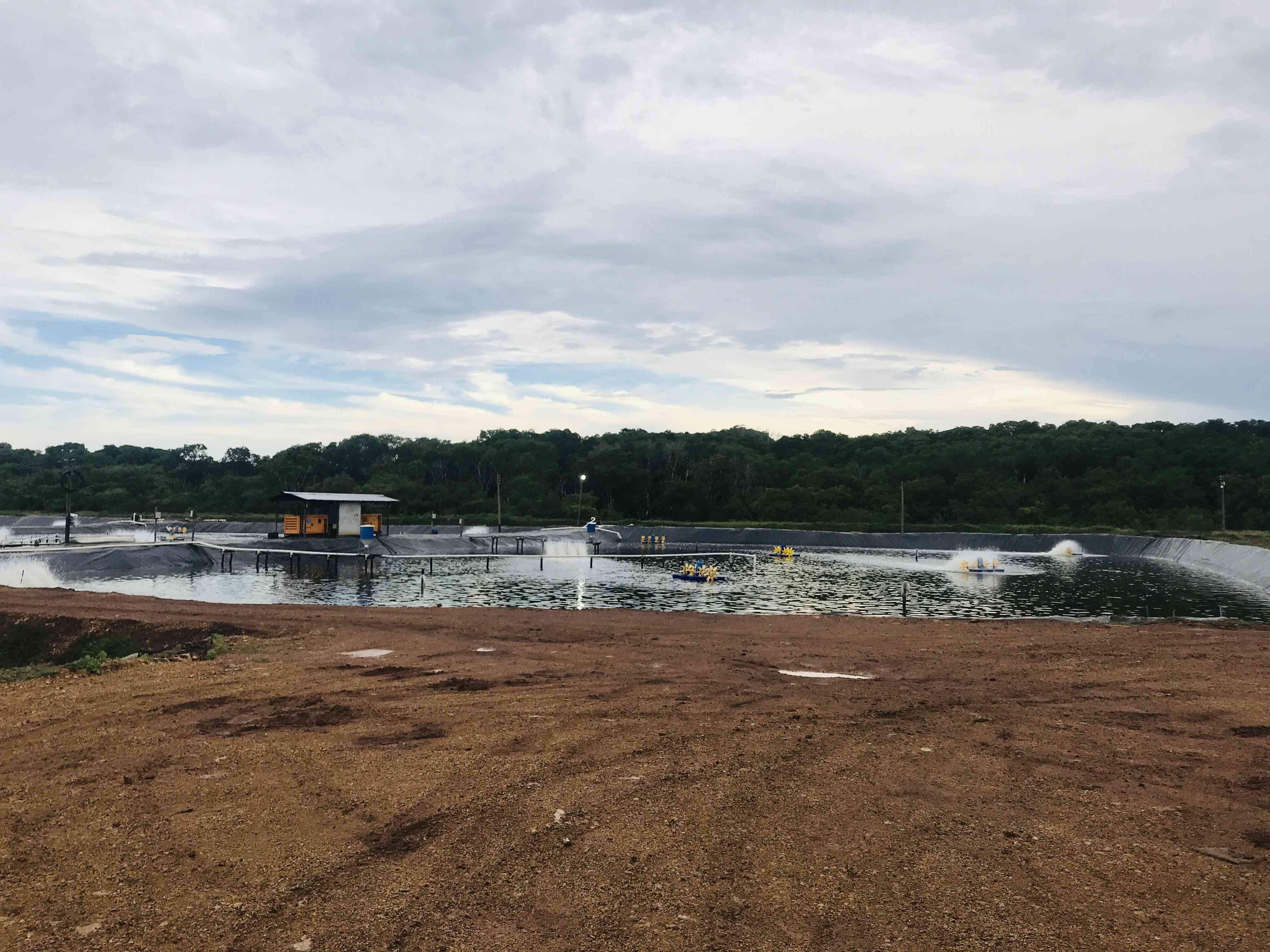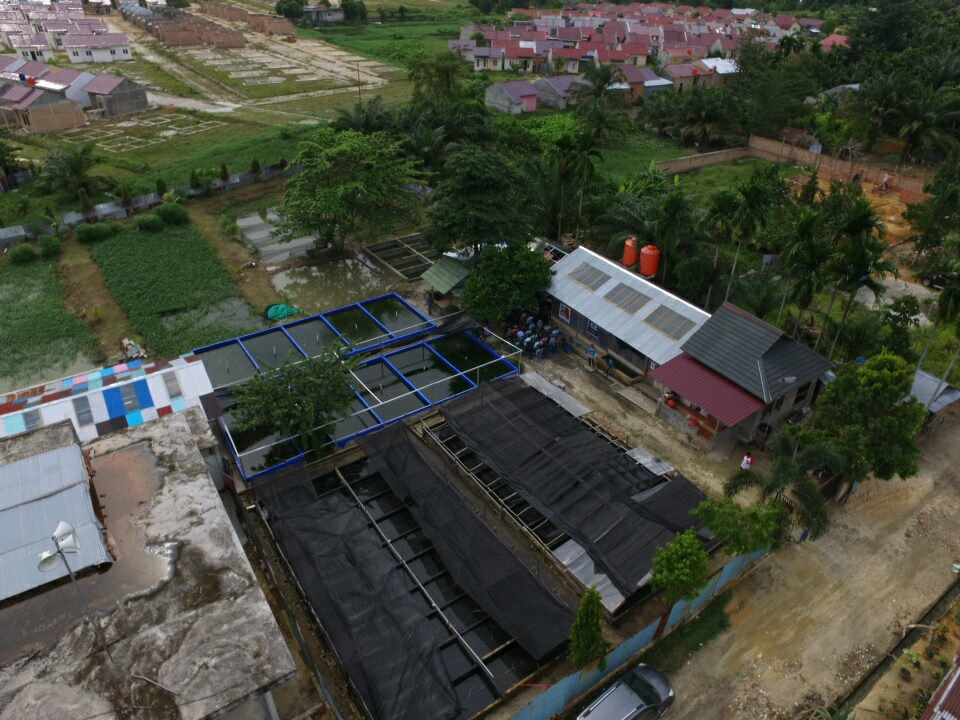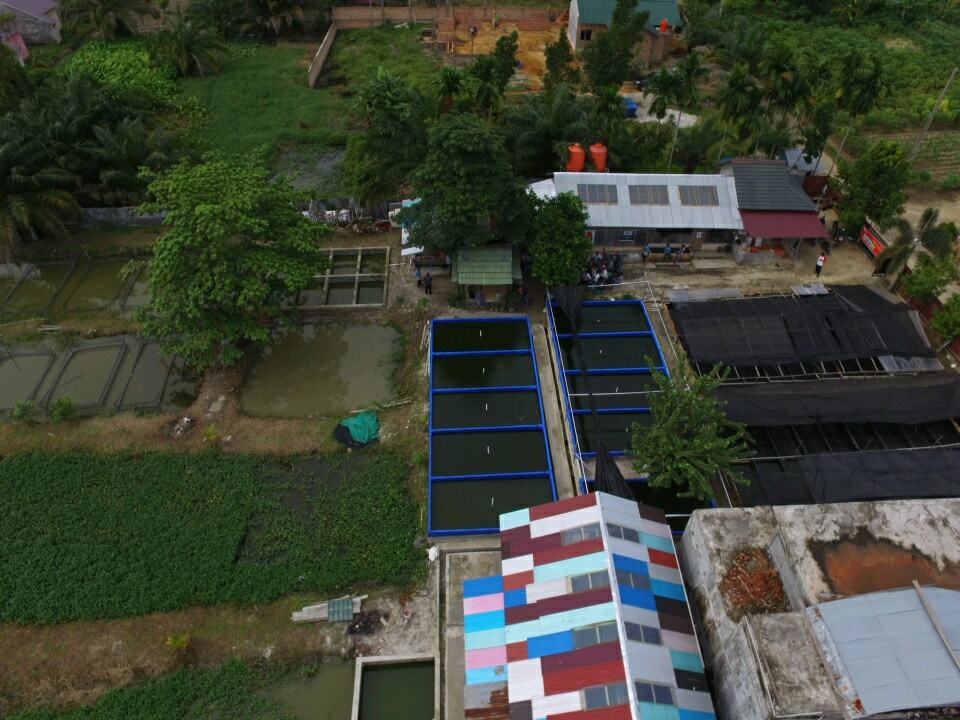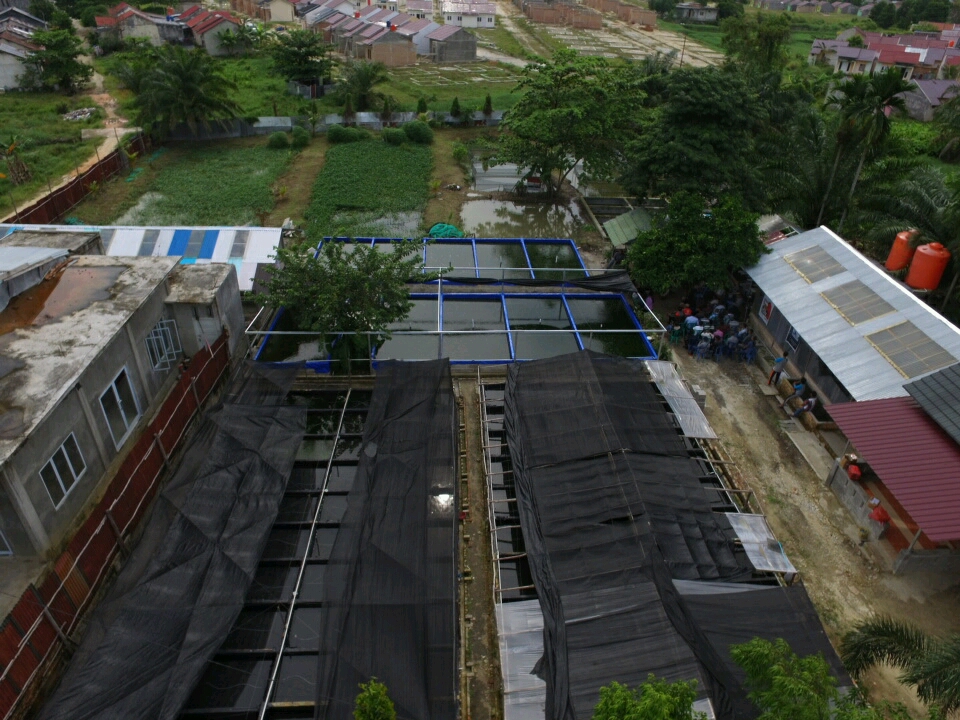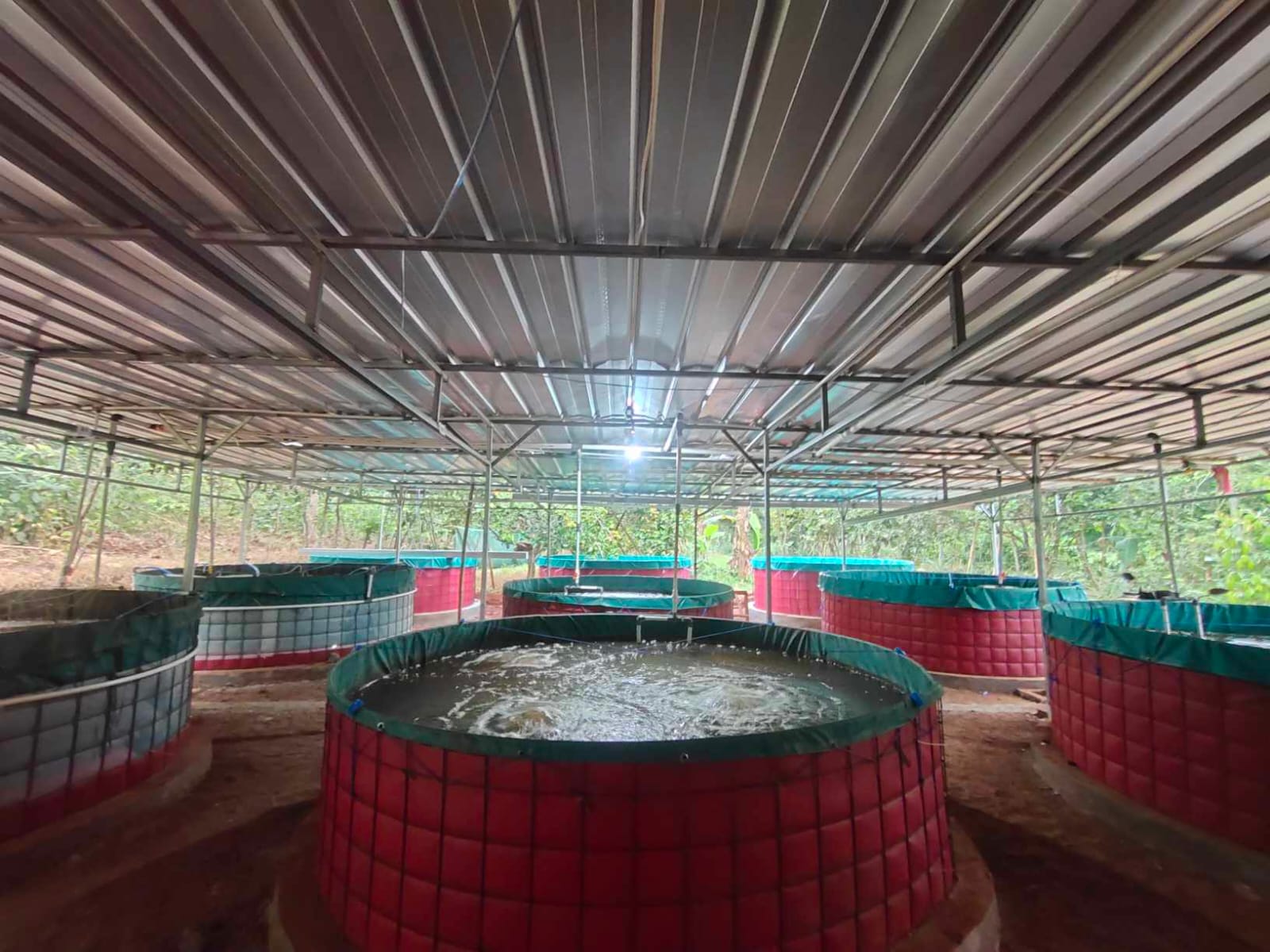The cultivation of Nile Tilapia (Oreochromis niloticus) represents one of the most rapidly expanding sectors in freshwater aquaculture, particularly within nations like Indonesia. This fish is distinguished by its rapid growth, remarkable resilience to varied environmental conditions, and high adaptability. Furthermore, its affordability has secured a stable and robust demand in local and national markets, making it a cornerstone of food security and a promising economic venture.
According to data from the Ministry of Marine Affairs and Fisheries, national tilapia production in Indonesia reached 1.38 million metric tons in 2024, a steady increase from 1.36 million metric tons the previous year. This output positions tilapia as one of the largest freshwater aquaculture commodities in the country, second only to catfish. Demand is projected to climb, driven by population growth and the corresponding need for healthy, economical sources of animal protein. Beyond domestic consumption, tilapia holds significant export potential, especially in the form of processed fillets destined for markets in the United States, Canada, and parts of Europe.
This potential makes tilapia farming an attractive prospect for new entrepreneurs. However, the path to a successful harvest is paved with challenges that often trip up newcomers. Many fledgling operations falter due to a lack of understanding of the technical and managerial aspects of aquaculture. Common pitfalls include the miscalculation of capital, poor water quality management, selection of inferior seed stock, and errors in feed administration and disease control.
Therefore, a thorough understanding of each stage of the cultivation process is essential before launching a tilapia farming enterprise. This article will address the critical considerations for the novice farmer, from initial financial planning and pond preparation to grow-out management and effective marketing strategies.
1. Securing and strategizing capital
Capital is the bedrock of any successful business, and tilapia farming is no exception. Prospective farmers must develop a detailed understanding of the cost components involved, which can be broadly categorized into initial investment and ongoing operational expenses.
Initial investment
A significant portion of the initial outlay is dedicated to securing a location and establishing basic infrastructure. The choice of site is paramount to success. An ideal location should be close to a clean water source and have reliable transportation access for the distribution of both fingerlings and the final harvest. For those who do not own land, leasing is a viable option. In regions like Java, the annual cost to lease land suitable for freshwater ponds ranges from IDR 3 million to IDR 10 million per hectare (approximately USD 185 to USD 620 per 2.47 acres), depending on the location and accessibility.
The next step is the construction of the cultivation ponds. Farmers face two primary choices: earthen ponds or concrete tanks. Earthen ponds are generally less expensive to build but require regular maintenance, including soil treatment and liming. Concrete tanks, while demanding a higher initial investment, offer greater durability and easier control over water quality. The construction cost for a single 4 x 6-meter (24 square meters) concrete tank can range from IDR 5 million to IDR 7 million (approximately USD 310 to USD 435), depending on material specifications and the complexity of the system.
Tilapia cultivation using a biofloc system in concrete ponds: Luhkan Kab. Way Kanan/Joko Widodo
Equally important are the procurement of high-quality fingerlings and essential support equipment. The price for Nile Tilapia fingerlings measuring 3–5 centimeters (1.2–2 inches) typically falls between IDR 150 and IDR 250 per fish (less than two U.S. cents), depending on their quality and strain. Necessary equipment includes shovels for pond cleaning, aeration systems to increase dissolved oxygen, buckets, hoses, and water quality monitoring tools such as pH meters, thermometers, and dissolved oxygen (DO) meters.
Monthly operational costs
Once the initial capital is deployed, farmers must manage recurring operational costs, divided into fixed and variable expenses.
Fixed costs primarily involve the depreciation of long-term assets like ponds, nets, and water pumps. For instance, if a concrete pond built for IDR 6 million (~USD 375) has an estimated useful life of five years, its annual depreciation cost is IDR 1.2 million (~USD 75). Calculating depreciation is vital for understanding the declining value of assets and planning for their eventual replacement.
Variable costs, meanwhile, are routine expenditures that fluctuate with the scale of production. The largest single component of variable costs is feed, which can account for 60–70 percent of total operational spending. For tilapia, the daily feed requirement is approximately 3-5 percent of the fish's total body weight, with feed prices ranging from IDR 10,000 to IDR 13,000 per kilogram (~USD 0.28 to USD 0.37 per pound). Other variable expenses include vitamins, probiotics, and medications to maintain fish health, as well as costs for electricity to run pumps and aerators, clean water, and wages for any hired labor.
By meticulously detailing and tracking all these cost components, a novice farmer can more accurately calculate the break-even point (BEP)—the point at which total revenue equals total costs. Understanding the BEP is fundamental for setting a competitive sale price, establishing production targets, and ultimately evaluating the financial viability of the entire operation.
2. Creating the ideal environment
For farmers utilizing earthen ponds, the preparation phase is a foundational process that directly influences the health and productivity of the entire cultivation cycle. The first step is to thoroughly dry the pond bottom. This process, which typically takes three to seven days depending on the intensity of sunlight, serves a dual purpose: it eradicates harmful pathogens and parasites lurking in the mud and improves the soil's structure through aeration. Once the base is completely dry and cracked, the soil should be tilled or turned over to a depth of at least 10 centimeters (about 4 inches). This loosens the earth, making it more receptive to subsequent treatments.
Next is the critical step of liming, which aims to stabilize the pond's pH. Tilapia thrive in a neutral to slightly alkaline environment, with a water pH between 7 and 8. If the pond soil is too acidic (pH < 6), it can hinder fish growth. Farmers are advised to apply agricultural lime or dolomite at a rate of 500 to 1,000 kilograms per hectare (approximately 445 to 890 pounds per acre), mixing it into the tilled soil. The pond is then left for two to three days to allow the lime to react and buffer the soil pH effectively.
Following liming, the pond must be fertilized to encourage the growth of a healthy plankton bloom, which will serve as a natural food source for the tilapia. This begins with an application of organic fertilizer, such as dried livestock manure or compost, at a rate of 1 to 2 metric tons per hectare. This is left for one to two weeks to decompose fully. Subsequently, inorganic fertilizers like Urea (50–70 kg/ha) and Triple Super Phosphate (TSP) (25–30 kg/ha) are added to further enrich the water.
The final stage is the gradual filling of the pond. Water is introduced to an initial depth of 10–20 centimeters (4–8 inches) and left for three to five days, allowing plankton to multiply. The water level is then incrementally raised until it reaches an operational depth of 70–75 centimeters (27.5–29.5 inches). It is imperative that the water used is from a clean source, free from heavy metals, pesticides, and other chemical contaminants.
3. The grow-out phase
The grow-out phase is where diligent management translates directly into harvest yield. Success at this stage hinges on three core pillars: maintaining water quality, implementing an efficient feeding strategy, and proactive disease control.
Water quality is paramount. Key parameters such as temperature, pH, and dissolved oxygen (DO) must be monitored regularly. Tilapia perform best in water temperatures between 25–30°C (77–86°F), a pH range of 7–8, and a DO level of at least 3.6 mg/L. Research confirms that when DO levels fall below 3 mg/L, fish experience stress, reduced appetite, and an increased risk of mortality. Farmers must also remain vigilant against the accumulation of toxic compounds like ammonia, a natural byproduct of fish waste.
Tilapia experiencing mass mortality in a grow-out pond: Luhkan Kotabaru/Agus Tinus
Feeding represents the single largest operational expense, often accounting for 60–70 percent of the total budget. Novice farmers must be precise in their feed selection and administration. For tilapia, a floating pellet with a protein content of approximately 25 percent is recommended to meet their nutritional needs. The ideal feeding frequency is three to four times per day. The daily ration should be about 3-5 percent of the total fish biomass in the pond. For example, if the total weight of fish in a pond is 100 kilograms (approx. 220 pounds), the daily feed allotment would be around 5 kilograms (approx. 11 pounds).
Proactive health management must be a priority from day one. All new fingerlings should be quarantined for three to five days before being introduced to the main pond to ensure they are free of pathogens. Daily observation is crucial for detecting early signs of disease, such as lethargic behavior, white spots on the skin, or other changes in appearance. Should treatment be necessary, the use of medications and probiotics must strictly follow the dosage and instructions provided by fisheries experts or suppliers to ensure both efficacy and safety.
Embarking on a tilapia farming venture is to engage in a practice that is part science, part business, and wholly dependent on dedication. The journey from a dry, empty pond to a bountiful harvest is governed by the principles of careful financial planning, meticulous environmental preparation, and vigilant, day-to-day management. The challenges are real—from fluctuating market prices to the ever-present threat of disease—but they are not insurmountable. For the aspiring aquaculturist, success lies in respecting the biological needs of the fish and the ecological balance of their environment. By doing so, tilapia farming offers more than just a source of income; it provides an opportunity to contribute to global food security and build a resilient, sustainable livelihood.




















